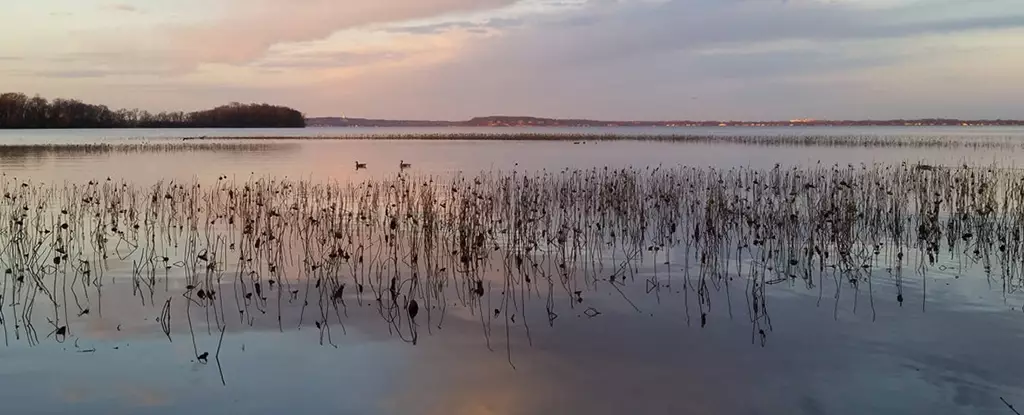Lake Mendota, a significant natural feature of Wisconsin, showcases how seasonal changes influence its ecological balance, especially regarding its microbial life. The transition from the frigid embrace of winter ice to the vibrant, albeit algae-laden, summers fundamentally alters the fabric of life within the lake. Recent research spearheaded by scientists at the University of Texas at Austin sheds light on the intricate connections between environmental shifts and microbial evolution, illustrating a backdrop where time and genetic information intermingle.
The research team meticulously analyzed a comprehensive dataset consisting of 471 microbial samples sourced from Lake Mendota over a span of two decades. This longitudinal study aimed to decode the genetic variations present within and amongst diverse bacterial species as they responded to the ever-fluctuating environmental conditions. The findings revealed intriguing patterns of evolution; many bacterial species underwent significant genetic changes over the course of the seasons, only to revert to nearly identical forms as environmental conditions cycled back.
The rapid life cycles of these microbes, typically spanning just a few days, translate into a staggering number of generations within the span of a year. Imagine the evolutionary implications of such accelerated life cycles; thousands of generations persist within a single season, creating a rich narrative of natural selection and adaptation.
Remarkably, the study found that roughly 80 percent of the 2,855 bacterial genomes exhibited seasonal cycles of genetic change. This cyclicality acts almost like a biological reset button, with microbes oscillating between evolutionary states as environmental factors shift. This phenomenon echoes the cyclical nature of seasons, resembling a video that plays forward and then rewinds back to its initial frame.
However, the research illuminated more than just these cyclical adaptations. About 20 percent of the bacterial species studied revealed enduring patterns of genetic change that extended over decades. Notably, in 2012—a particularly hot and dry year—shifts in genes associated with nitrogen metabolism highlighted the influence of extreme weather on microbial communities. As nitrogen-producing algae diminished due to reduced water inflow, particular bacterial strains thrived, showcasing how environmental pressures can shape genetic outcomes over time.
The researchers harnessed cutting-edge metagenomic techniques to analyze the microbial samples. By employing a supercomputer, they could unravel complex genetic sequences from the lake water. This process involves assembling fragments of DNA to reconstruct the genomic “books” of each species, whereby analyzing these tiny segments offers insights into broader ecological narratives.
Robin Rohwer, a leading microbial ecologist, likened the process to piecing together a jigsaw puzzle, where each DNA fragment represents a part of a story that reveals how different microbial communities interact and evolve. This innovative approach enhances our understanding of the microbial world, providing a detailed account of how environmental factors directly influence genetic diversity.
The findings of this study offer critical implications for broader ecological and evolutionary research. The intertwining of ecology and evolution suggests that microbial communities may not exist in isolated bubbles; instead, they frequently respond to ecological pressures, adapting continually to meet the demands of a changing environment. Such knowledge becomes particularly crucial in the context of climate change, where altered seasonal patterns and extreme weather events continue to reshape ecosystems globally.
Understanding which bacterial strains will flourish under changing conditions is vital for predicting shifts related to carbon absorption rates in water bodies. These shifts can have cascading effects on aquatic food webs, exacerbating the complexity of environmental monitoring and conservation efforts. As Brett Baker, a marine scientist involved in the study, emphasizes, this research is merely the tip of the iceberg regarding our understanding of microbial ecology and its role in the planet’s ecosystems.
Lake Mendota serves as a microcosm of how dynamic ecosystems respond to seasonal changes, with its bacteria reflecting patterns of rapid evolution and adaptation. As scientists unravel more of these intricate relationships, they pave the way for enhanced ecological understanding and informed strategies to mitigate the impacts of climate change on both local and global scales.

Leave a Reply